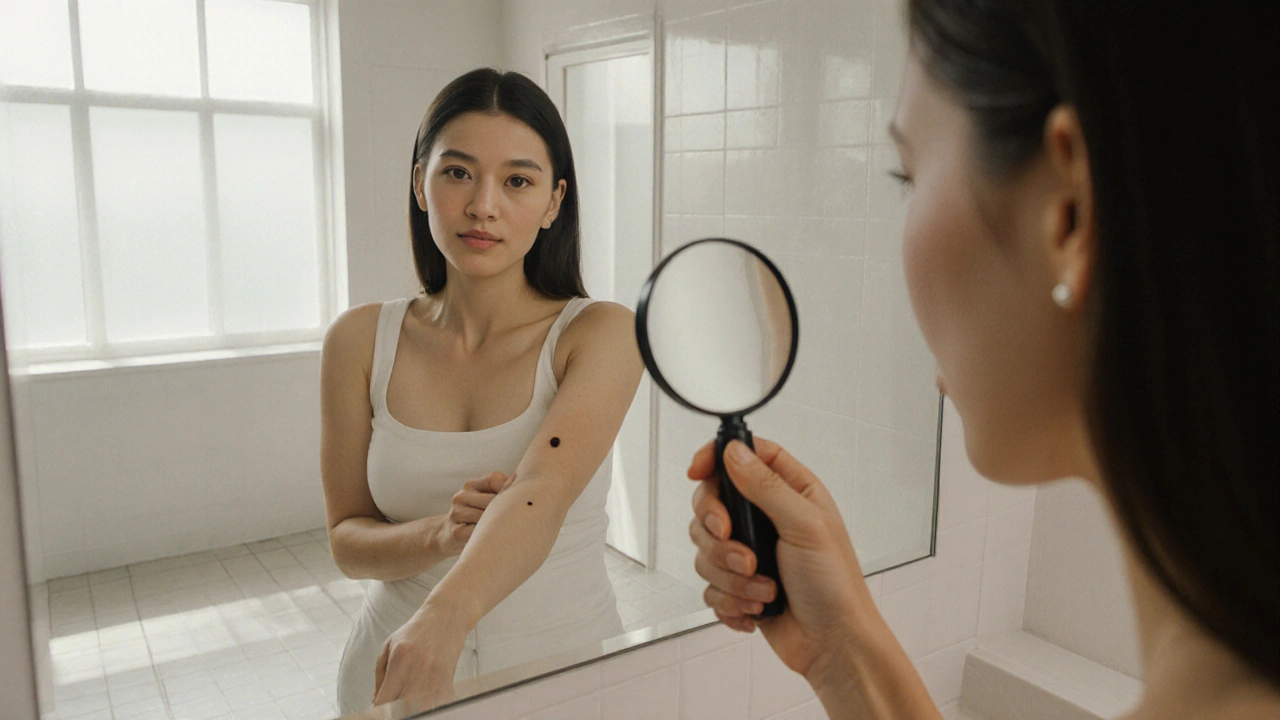Melanoma Risk Factors – What Really Raises Your Chances
When talking about melanoma risk factors, the set of conditions that increase the likelihood of developing melanoma, the deadliest form of skin cancer. Also known as skin cancer triggers, they span environmental, genetic, and lifestyle elements. Below we break down the biggest contributors so you can see where you fit in the risk picture.
Key Contributors to Melanoma Risk
UV radiation, high‑energy sunlight that damages DNA in skin cells tops the list. Frequent, unprotected exposure erodes the skin’s natural defenses and creates mutations that can turn normal cells cancerous. Even on cloudy days, UV‑B rays reach the surface, so regular sunscreen use isn’t optional—it’s a daily habit.
Genetic predisposition, inherited mutations such as CDKN2A that raise melanoma risk plays a big role for families with a history of the disease. If a first‑degree relative had melanoma, your odds jump three to eight times higher. Genetic testing can pinpoint high‑risk variants, allowing doctors to schedule more frequent skin exams.
Skin type, the amount of melanin in your skin, determines how well you absorb UV damage matters too. Fair skin that freckles or burns easily (Fitzpatrick I‑II) lacks protective melanin and suffers the most from UV hits. Darker skin (III‑VI) still isn’t immune, but the risk curve flattens as melanin levels rise.
Age adds another layer. While melanoma can appear at any age, the incidence climbs sharply after 50. Older adults often have accumulated lifetime sun exposure, and aging skin’s repair mechanisms weaken, making DNA errors harder to fix.
Immune suppression, whether from organ‑transplant medication or chronic disease, also tilts the odds. A weakened immune system can’t spot and destroy early cancer cells, allowing them to grow unchecked.
History of severe sunburns, especially during childhood, is a strong predictor. One blistering burn can double lifelong risk. Likewise, indoor tanning beds emit concentrated UV‑A light, which penetrates deeper and raises melanoma odds even more than outdoor sun.
Prevention hinges on three practical steps: apply broad‑spectrum SPF 30+ sunscreen every day, wear protective clothing (hats, long sleeves) during peak sun hours, and avoid tanning beds altogether. Re‑applying sunscreen after swimming or sweating maintains the shield.
Early detection saves lives. Perform a monthly skin self‑check, looking for the ABCDE signs (Asymmetry, Border, Color, Diameter, Evolving). If anything changes, schedule a dermatologist visit promptly. Regular professional exams, especially for high‑risk groups, catch melanoma when it’s most treatable.
Below you’ll find a collection of articles that dive deeper into each of these areas—covering the science behind UV damage, how genetics influence risk, practical sun‑safety tips, and the latest guidance on skin checks. Use them to tailor your own prevention plan and stay ahead of melanoma.

